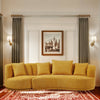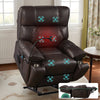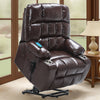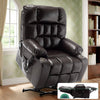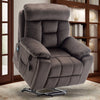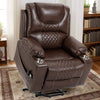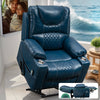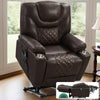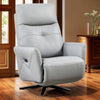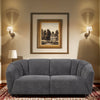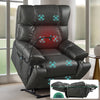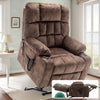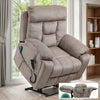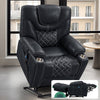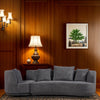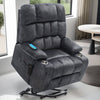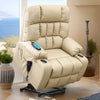Understanding the Appeal of Square Sectional Sofas
The Ergonomic Advantages of Sectional Design
Square sectional sofas offer great ergonomic benefits. They provide ample seating and support for various body types. The L-shape design allows for proper posture and relaxation. Users can stretch out or sit upright comfortably. This makes them ideal for seniors or those with mobility issues. The modular nature of sectionals lets you arrange them to suit your needs. You can create a cozy corner or a spacious lounging area. Some models even include recliners for extra comfort.

Space-Saving Features of Square Sectional Sofas
Square sectional sofas are perfect for maximizing space in your home. They fit snugly into corners, making use of often wasted areas. This design frees up floor space for other furniture or activities. Many models come with built-in storage, perfect for small living spaces. You can hide blankets, remotes, or magazines inside. Some sofas have convertible sections that turn into beds. This feature is great for homes without guest rooms.
Versatility in Multi-Purpose Living Spaces
Square sectionals shine in multi-purpose rooms. They can easily divide a space into different zones. For example, you can create a TV viewing area and a conversation nook. The modular pieces allow for easy rearrangement. You can adapt the layout for various occasions. Host a movie night or rearrange for a party. Some sectionals come with movable ottomans or chaise lounges. These add extra seating or footrests as needed.
Key Considerations When Selecting a Square Sectional Sofa
Evaluating Quality and Durability for Long-Term Use
When choosing a square sectional, quality is key. Look for sturdy frames made of hardwood or metal. Check the joints and legs for stability. High-quality upholstery fabric is crucial for longevity. Look for materials resistant to stains and wear. Leather is durable but may require more care. Performance fabrics offer easy cleaning and long-lasting beauty. Consider the warranty and after-sales service. A good warranty can protect your investment for years to come.

Assessing Comfort and Support for All Body Types
Comfort is crucial when selecting a sectional sofa. Consider the needs of all family members. Look for cushions that offer a balance of softness and support. Memory foam or high-density foam can provide lasting comfort. The seat depth should accommodate different heights. Adjustable headrests can add extra neck support. For seniors or those with mobility issues, consider models with higher seat heights. This makes it easier to sit down and stand up.
Matching Your Sectional Sofa with Your Decor
Your square sectional should complement your home's style. Consider the color and texture of the upholstery. Neutral tones offer versatility and longevity. Bold colors can make a statement but may limit future decor changes. Look at the overall shape and lines of the sofa. Modern designs often have clean, straight lines. Traditional styles may feature rolled arms or tufted backs. Consider the scale of the sectional in relation to your room size. A too-large sofa can overwhelm a small space.
Top Picks for Square Sectional Sofas in the United States
Leading Brands and Retailers Offering Quality Sectionals
Several brands stand out in the square sectional market. Ashley Furniture offers a wide range of affordable options. Their designs blend style and functionality. La-Z-Boy is known for comfort and quality. They offer many customizable sectionals. Pottery Barn provides high-end, stylish options. Their sofas often feature premium materials and craftsmanship. Wayfair offers a vast selection from various brands. This makes it easy to compare different styles and prices.

Customer Reviews and Ratings on Sectional Sofas
Customer reviews are valuable when choosing a sectional sofa. Look for feedback on comfort, durability, and customer service. Many buyers praise the Sven sectional from Article for its style and comfort. The Lounge II from Crate & Barrel gets high marks for quality and versatility. IKEA's Söderhamn series is popular for its affordability and modular design. Remember to read both positive and negative reviews. This gives a balanced view of each product.
The Best Deals and Where to Find Them
To find the best deals on square sectionals, timing is key. Many retailers offer sales during major holidays. Black Friday and Memorial Day often have great furniture deals. Online marketplaces like Overstock and Wayfair frequently run promotions. Sign up for newsletters to get early access to sales. Consider floor models or clearance items for significant savings. Some stores offer price matching, so always compare prices. Don't forget to factor in delivery costs when calculating the total price. Some retailers offer free delivery, which can save you a lot.







